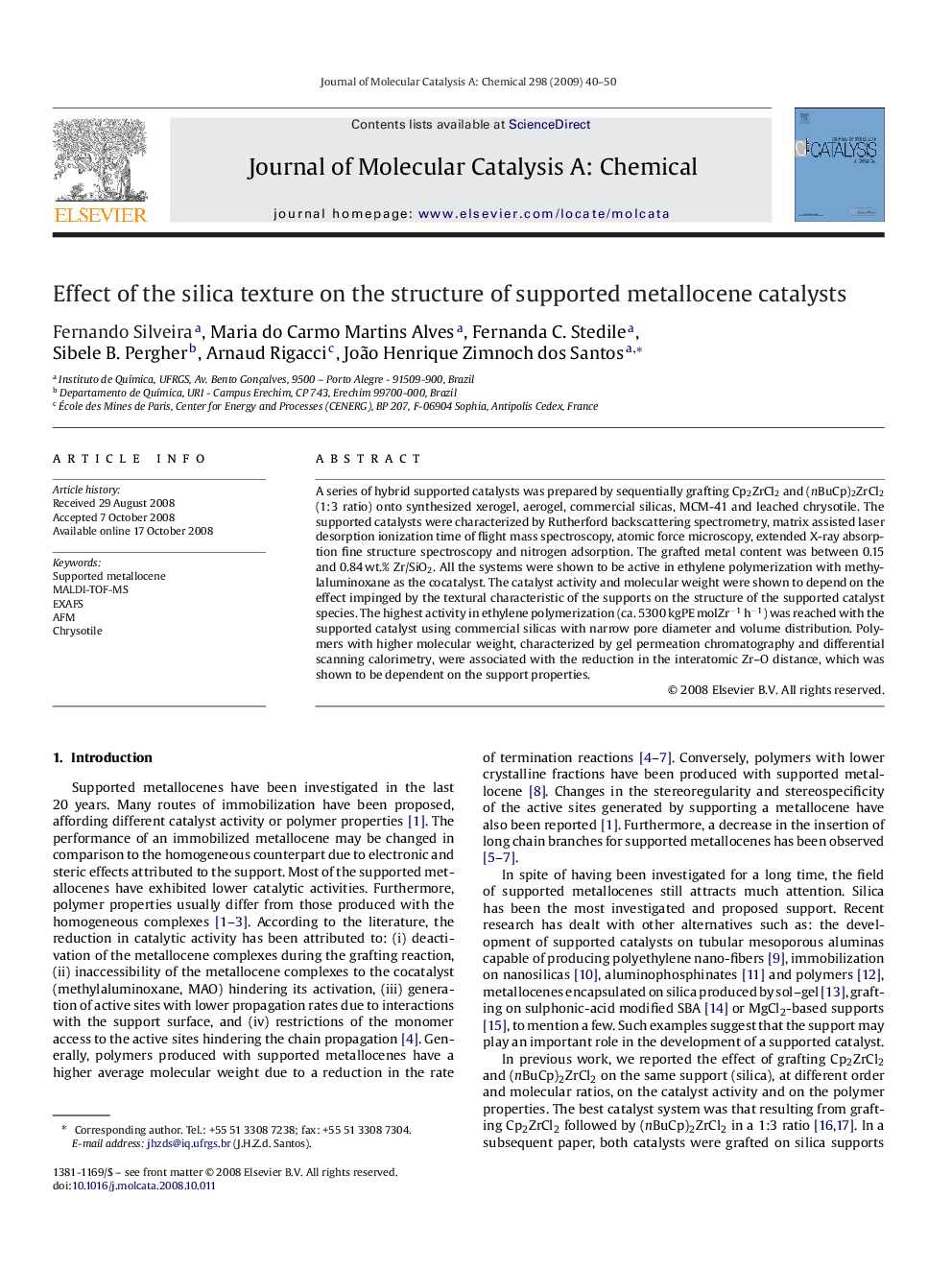| Article ID | Journal | Published Year | Pages | File Type |
|---|---|---|---|---|
| 67096 | Journal of Molecular Catalysis A: Chemical | 2009 | 11 Pages |
A series of hybrid supported catalysts was prepared by sequentially grafting Cp2ZrCl2 and (nBuCp)2ZrCl2 (1:3 ratio) onto synthesized xerogel, aerogel, commercial silicas, MCM-41 and leached chrysotile. The supported catalysts were characterized by Rutherford backscattering spectrometry, matrix assisted laser desorption ionization time of flight mass spectroscopy, atomic force microscopy, extended X-ray absorption fine structure spectroscopy and nitrogen adsorption. The grafted metal content was between 0.15 and 0.84 wt.% Zr/SiO2. All the systems were shown to be active in ethylene polymerization with methylaluminoxane as the cocatalyst. The catalyst activity and molecular weight were shown to depend on the effect impinged by the textural characteristic of the supports on the structure of the supported catalyst species. The highest activity in ethylene polymerization (ca. 5300 kgPE molZr−1 h−1) was reached with the supported catalyst using commercial silicas with narrow pore diameter and volume distribution. Polymers with higher molecular weight, characterized by gel permeation chromatography and differential scanning calorimetry, were associated with the reduction in the interatomic Zr–O distance, which was shown to be dependent on the support properties.
Graphical abstractThe textural parameters of silicas, employed as supports for metallocene immobilization, influenced the catalyst activity as well as the polymer characteristics. The pore size and its distribution affect the catalyst activity through the formation of bimolecular species and the diffusion of reagents to the catalyst sites. The variation in the Zr–O interatomic distance influences the polymer molecular weight. Increasing this distance engenders polymers with a lower molecular weight.Figure optionsDownload full-size imageDownload as PowerPoint slide
